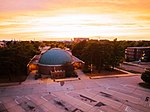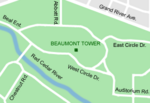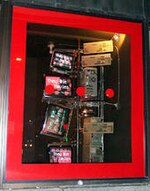The Rock (Michigan State University)

The Rock is a large pudding stone on the campus of Michigan State University, which has been painted with messages by campus groups since the 1960s. Unearthed in 1873, and installed on the campus by the class of 1873, the Rock became known as a site for engaged and married couples in the 1910s. Nicknamed the "Engagement Rock" in the 20th century, its purpose shifted in the 1960s and 1970s when graffiti began to appear on it for protest and promotional purposes. The university's efforts to remove the paint in the late 1970s failed, and the painting of the Rock continued. The university recognized the tradition of painting the Rock in the 1980s, and moved it to a location more suitable for painting in 1985. Since then, the Rock has been repainted overnight on a regular basis with messages from individuals and campus organizations. Most messages are painted over nightly, but some messages have remained for longer: in 2014, a tribute to 8-year-old cancer victim Lacey "Princess Lacey" Holsworth remained in place for weeks, and a memorial to the 2023 Michigan State University shooting remained for months.
Excerpt from the Wikipedia article The Rock (Michigan State University) (License: CC BY-SA 3.0, Authors, Images).The Rock (Michigan State University)
Farm Lane, East Lansing
Geographical coordinates (GPS) Address Nearby Places Show on map
Geographical coordinates (GPS)
| Latitude | Longitude |
|---|---|
| N 42.728088 ° | E -84.477558 ° |
Address
The Rock
Farm Lane
48824 East Lansing
Michigan, United States
Open on Google Maps






